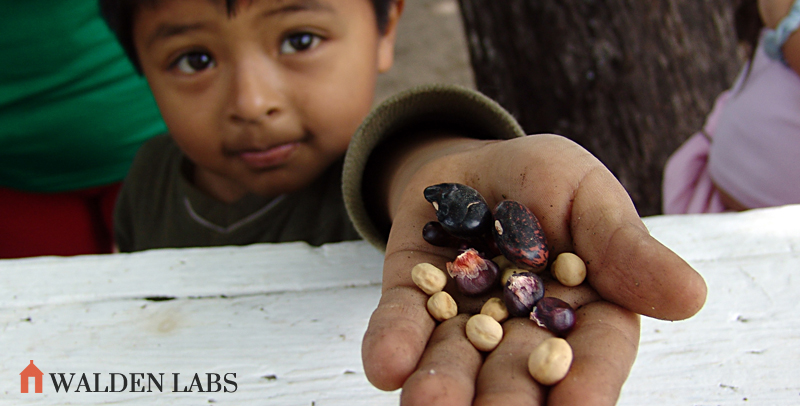What does food security actually mean? Here’s a line of thinking I’ve found that was useful. You might find it useful too.
- Food security starts with successfully growing something you can actually eat. It progresses as you get more skilled at growing a variety of foods throughout the season.
- If you can get to the point of either personally growing or locally sourcing nearly everything your family eats, you are well on your way to food security.
- However, real food security that can handle a wider variety of threats and opportunities goes beyond simply growing lots of food locally. It requires growing or raising heirloom and heritage foods locally that few others in the world do.
Why does it require heirloom vegetables or heritage livestock? Let’s dive into this a bit.
Our Inheritance
Essentially, “heirloom” or “heritage” is a way to describe the vast number of vegetables and livestock developed across history that haven’t been selected commercial production globally in the modern environment.
Collectively, this variety took human beings 10,000 years of diligent work to create. In short, it’s our food inheritance. A catalogue of resilience. A collection of nearly all of the plants and animals required to be productive in nearly every circumstance we might find ourselves in the future.
Unfortunately, it’s disappearing. It’s taken only fifty years of government subsidies and industrial mismanagement to squander it. To globally replace this cornucopia of food variety with a small number of commercial crops.
How badly did we squander it? Read this from an excellent article in National Geographic by Charles Siebert (well worth reading in full if you have the time):
In the United States an estimated 90 percent of our historic fruit and vegetable varieties have vanished. Of the 7,000 apple varieties that were grown in the 1800s, fewer than a hundred remain. In the Philippines thousands of varieties of rice once thrived; now only up to a hundred are grown there.
Johnny Appleseeed must be spinning in his grave.
Here’s the graphic from the article that depicts it. For example, in 1903 there were 497 different types of lettuce available in the US, and now there are only 36.
Growing Differently
Let’s cut to the chase on this. Here’s how growing heritage or heirloom foods will improve your food security:
- They provide you protection against plagues that are poised to decimate commercial mono-cultures.
- These plants and livestock may have characteristics that are much better for your local conditions than commercial species (particularly if that climate or those conditions are changing rapidly). For example: Drought resistance. Able to process specific flora or waste products.
- These rare products provide you a better chance at making an income through differentiation in the marketplace. The ability to sell produce at a premium rather than as a commodity.
So, get started. Start small. Take a look at the online store at the “Seed Savers Exchange” and find something that suits you.




